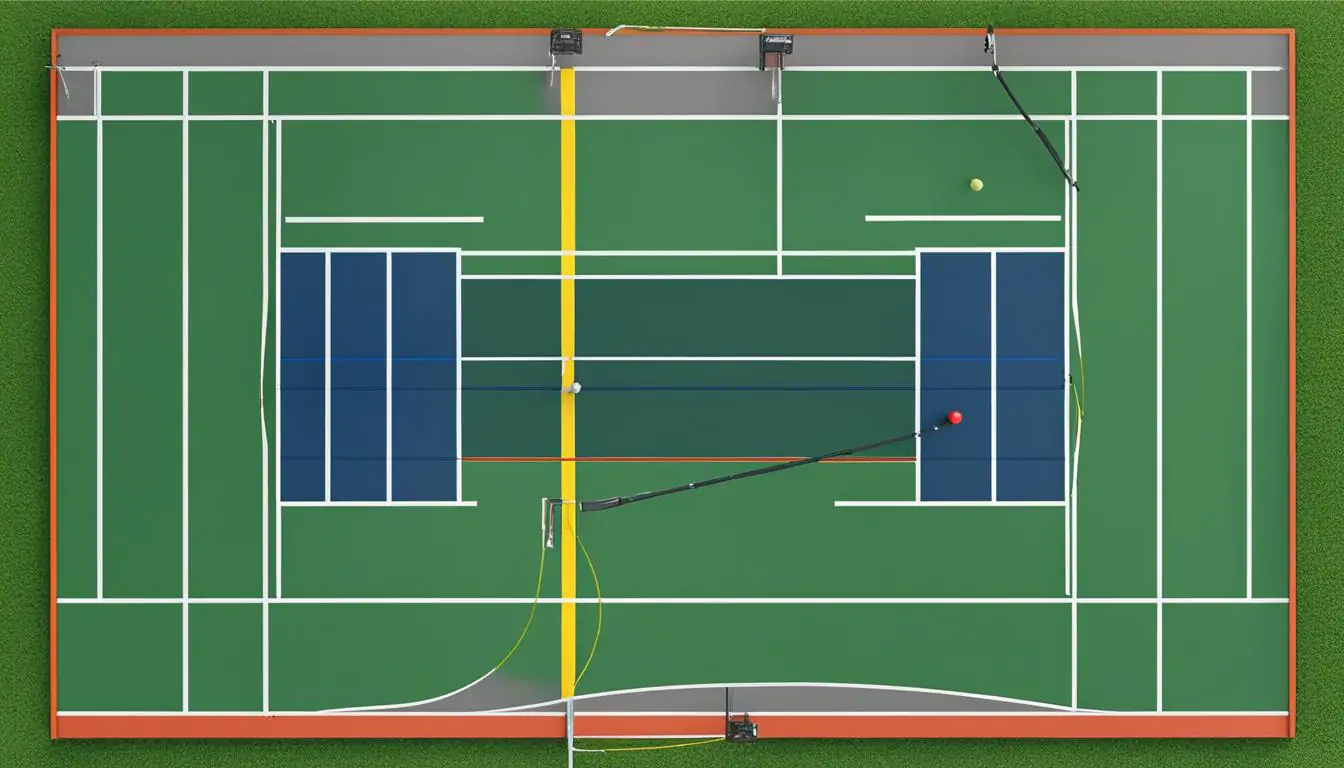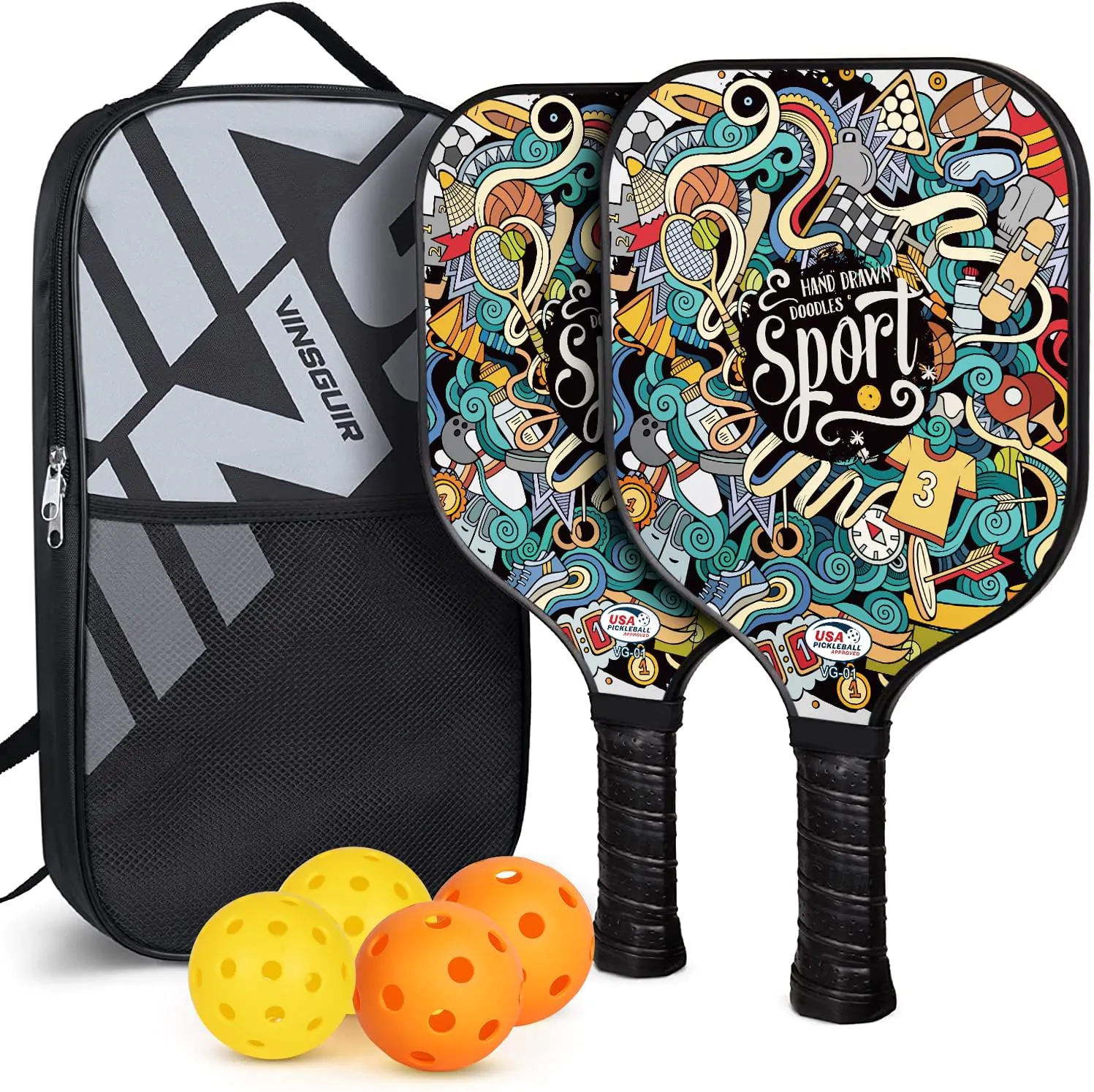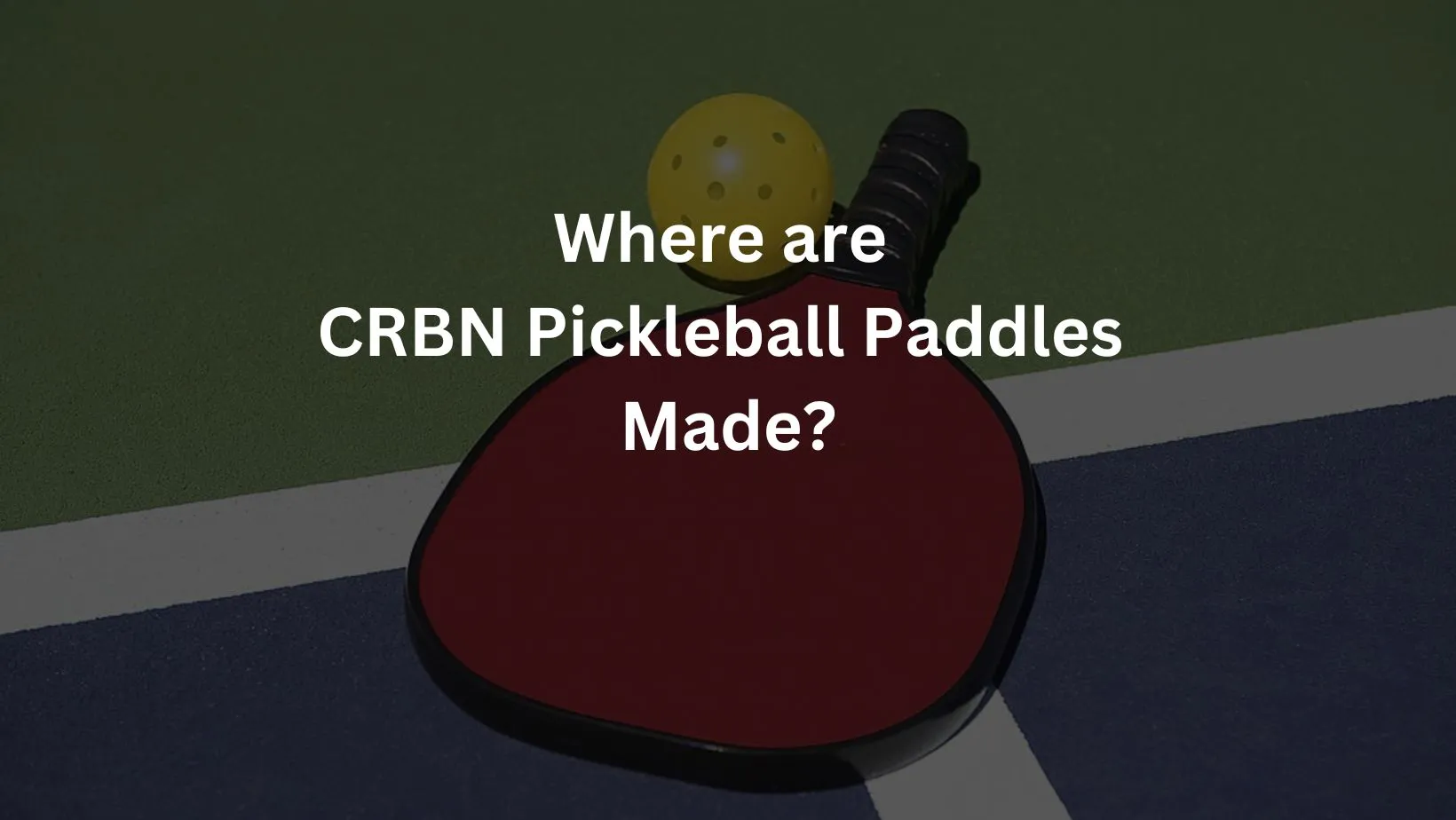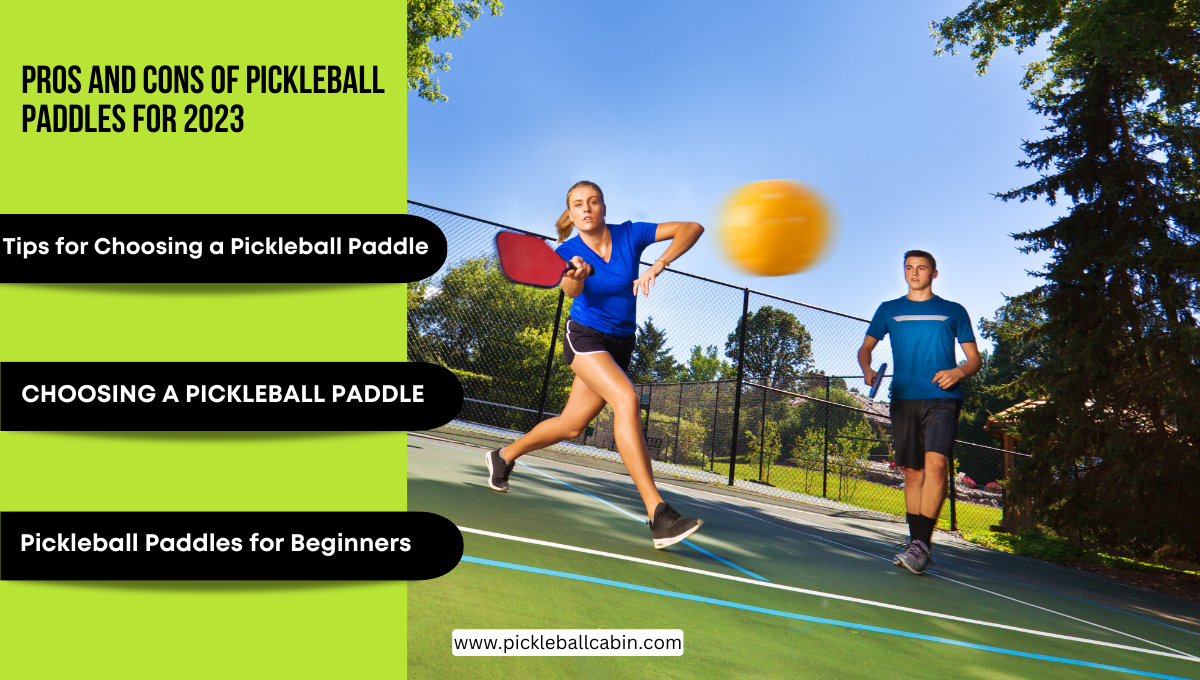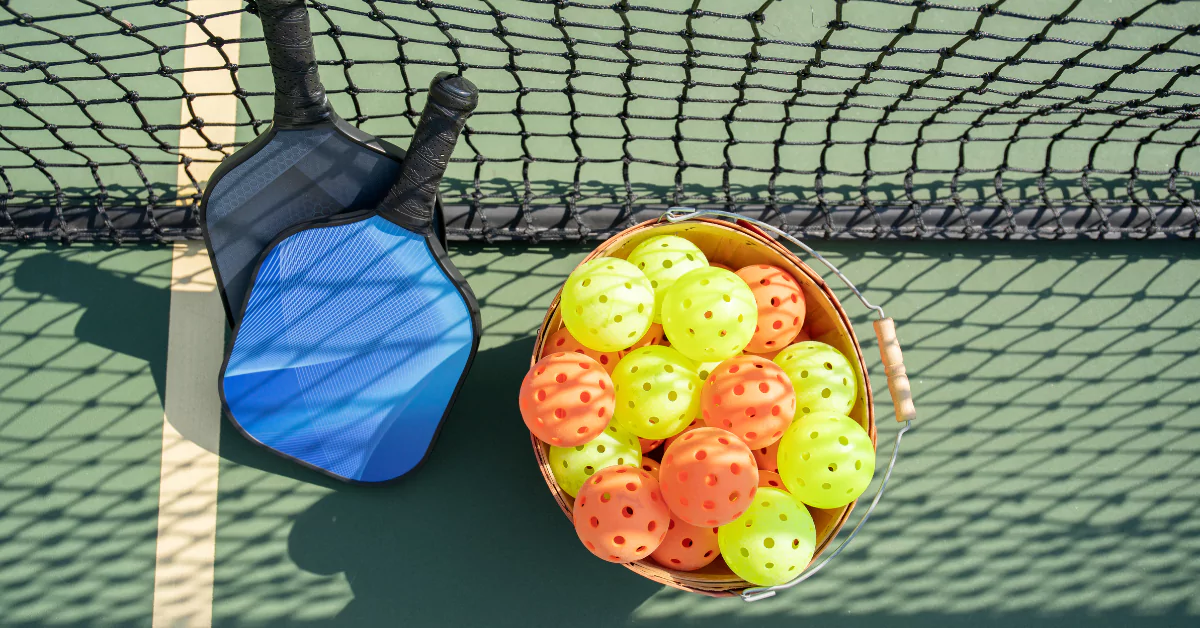Pickleball, a rapidly growing racquet sport, has seen an increased interest in the concept of smaller court dimensions. The standard pickleball court measures 20 feet wide and 44 feet long for doubles play, but there is a growing demand for more compact court sizes to accommodate different playing environments and preferences. As a result, smaller pickleball court dimensions in meters have been proposed to provide greater flexibility in court construction and utilization.
In response to the demand for compact court sizes, the United States of America Pickleball Association (USAPA) has specified the dimensions of a smaller pickleball court to be 6.10 meters wide by 13.41 meters long. These modified dimensions aim to cater to spaces with limited area availability, allowing players to enjoy the game in a diverse range of settings. By addressing the need for smaller court sizes, the sport can reach a broader audience and adapt to different playing conditions, further enhancing the accessibility and appeal of pickleball.
Key Takeaways
- Small pickleball court dimensions follow the standard size of 20 feet (6.10 m) wide by 44 feet (13.41 m) long.
- It is possible to fit up to four small pickleball courts on a standard tennis court.
- A small pickleball court can be temporarily marked with tape or chalk for easy conversion back to tennis play.
- The kitchen, or non-volley zone, is a unique feature of pickleball courts, extending 7 feet from the net on each side.
- DIY pickleball court setup requires basic tools like measuring tape, chalk, or painter’s tape to mark the boundaries.
- Customizing court dimensions for smaller spaces can be done, though ideal specifications may not be met.
Introduction to Pickleball Court Sizing
When planning to set up a pickleball court, understanding the standard dimensions and court sizing is crucial. In this section, we will cover the dimensions of a small pickleball court and compare them with the standard pickleball court dimensions, as well as explore the compact nature of pickleball courts compared to tennis courts.
Pickleball court dimensions share similarities with a standard doubles badminton court, measuring 20 feet wide by 44 feet long. These dimensions apply to both singles and doubles play in small pickleball courts. When accounting for out-of-bounds areas on either side of the court, the minimum total play area expands to 30 feet by 60 feet.
The compact size of pickleball courts becomes even more apparent when compared to tennis courts. In fact, one standard tennis court has enough room to accommodate four small pickleball courts. The following table demonstrates the dimensions of a small pickleball court versus those of a standard tennis court:
| Court Type | Width | Length | Total Play Area |
|---|---|---|---|
| Small Pickleball Court | 20 feet | 44 feet | 30 feet x 60 feet |
| Standard Tennis Court | 36 feet (singles) 78 feet (doubles) |
78 feet | 60 feet x 120 feet |
With this understanding of court sizing, you can now plan for the adequate space needed to set up a pickleball court in your chosen location, whether it be a personal backyard, a community center, or an adapted tennis court. As pickleball continues to grow in popularity, having knowledge of its court dimensions ensures a proper and enjoyable playing experience for all involved.
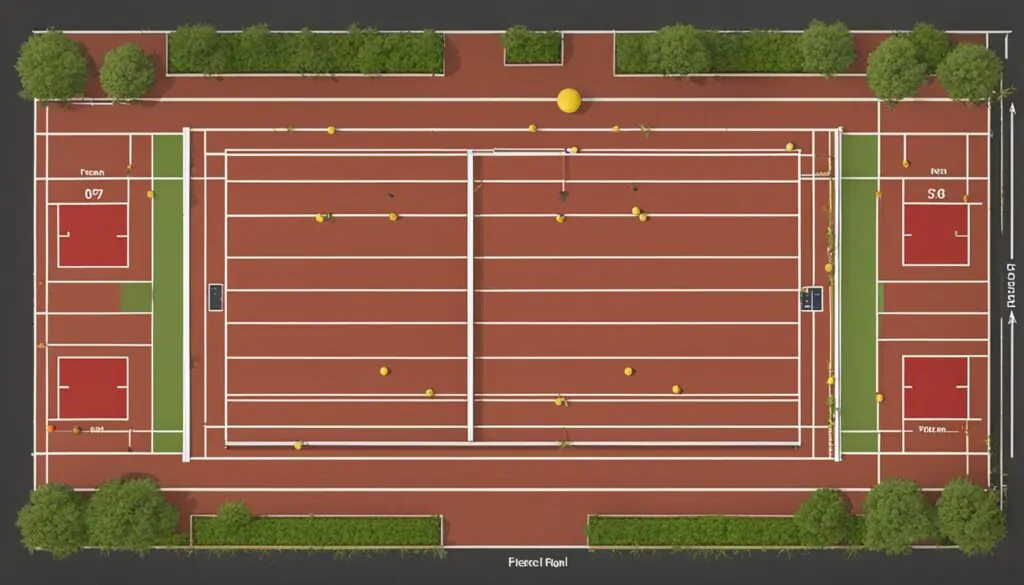
The Basics of Small Pickleball Court Dimensions
Understanding the size and layout of a pickleball court is essential for setting up a space suitable for this growing sport. This section covers the standard pickleball court dimensions, how they compare to tennis courts, and the process of converting tennis courts into pickleball play areas.
Recognizing the Standard Pickleball Court Size
The official dimensions for a pickleball court, as per the United States of America Pickleball Association (USAPA), are 20 feet in width and 44 feet in length. This size is consistent for both singles and doubles play, demonstrating the universal design of pickleball courts for various game formats.
How Small Pickleball Courts Compare to Tennis Courts
Small pickleball courts occupy a much smaller space than tennis courts. In fact, they have a quarter of the footprint of a standard tennis court pad, potentially allowing four pickleball courts where one tennis court exists. Additionally, where tennis courts have angled corners, at least two pickleball courts can comfortably fit within this space.
Fitting Pickleball Courts on Existing Tennis Surfaces
The conversion of tennis courts into small pickleball play areas entails strategic placement and alignment of pickleball lines with existing tennis lines to minimize confusion. Portable net stands can be used for a temporary setup, or the tennis net can be lowered to double as a backstop for balls. Adjustments might include a slight shift in placement in order to maintain proper spacing for the pickleball courts.
Consider the following table to better understand the differences between tennis and pickleball court dimensions:
| Tennis | Pickleball | |
|---|---|---|
| Court Width | 36 ft (singles) or 36 ft or 48 ft (with service area) | 20 ft |
| Court Length | 78 ft | 44 ft |
| Net Height at Center | 36 in | 34 in |
| Net Height at Posts | 42 in | 36 in |
As demonstrated, small pickleball courts require less space compared to tennis courts, making them a suitable option for maximizing play areas. Converting tennis courts into pickleball play spaces can provide players with more options and enable greater engagement in this increasingly popular sport.
Setting Up a Small Pickleball Court
Creating a small pickleball court on an existing tennis court is a popular and efficient way to enjoy the game without needing a dedicated space. Here’s how you can make the necessary adjustments to set up a small pickleball court on a tennis court:
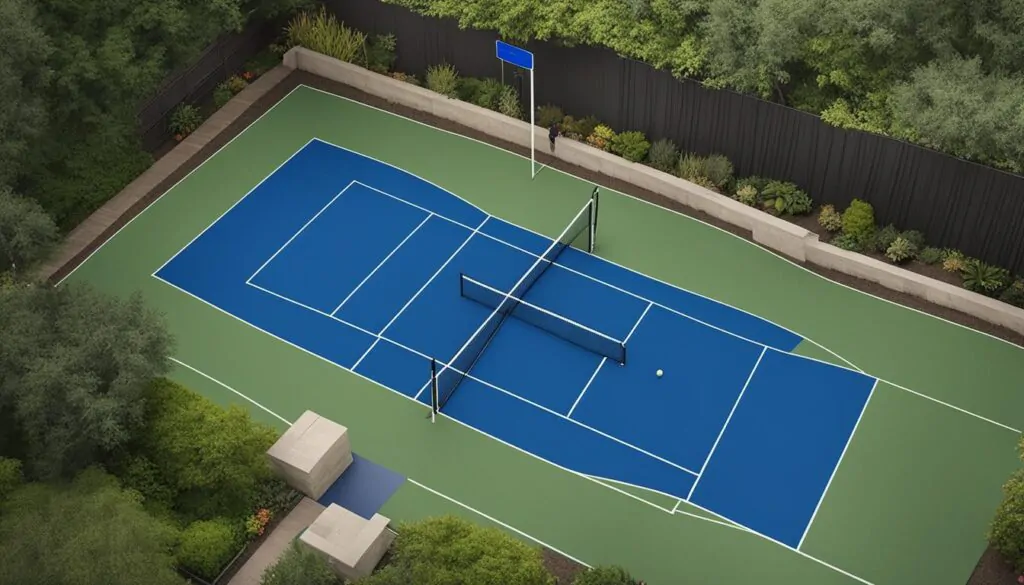
Lowering the Tennis Net for Pickleball
To accommodate pickleball play, you will need to lower a tennis net to the appropriate pickleball height. The center net strap can help set the height to 34 inches at the center. However, if the net cord tension is tight, you might need to loosen the ratchet on the net post before making adjustments. Once you achieve the desired height, secure any excess net strap to avoid tripping hazards during play.
Drawing the Lines: Converting a Tennis Court into Pickleball Play Area
Marking the boundaries for your small pickleball court on a tennis court involves accurately indicating sidelines, baselines, service areas, and the non-volley zone, commonly referred to as the kitchen. You can use either tape or paint to delineate the play area. Each option has its advantages:
- Tape: A temporary option that does not damage the tennis court surface and allows continuous use for tennis.
- Paint: A more permanent solution that is durable and weather-resistant, ensuring crisp and clear lines.
Keep in mind that you’ll need a clear understanding of the standard pickleball court dimensions and measurements when marking your court lines:
| Area | Measurement |
|---|---|
| Court Width | 20 feet |
| Court Length | 44 feet |
| Non-Volley Zone (Kitchen) | 7 feet from net (width of the court) |
Ensure that all lines are bright, visible, and accurately measured. By following these guidelines for lowering tennis net to pickleball height and marking pickleball lines on a tennis court, you’ll have a reliable and enjoyable small pickleball court setup, ready for hours of play.
Key Measurements for Small Pickleball Courts
When setting up a small pickleball court, it is crucial to adhere to the required measurements to ensure a satisfactory and regulation-compliant playing experience. Familiarity with the standard dimensions and measurements for small pickleball courts is essential to guarantee the correct setup and gameplay of this popular sport. Here, we will discuss the vital measurements that encompass small pickleball court dimensions.
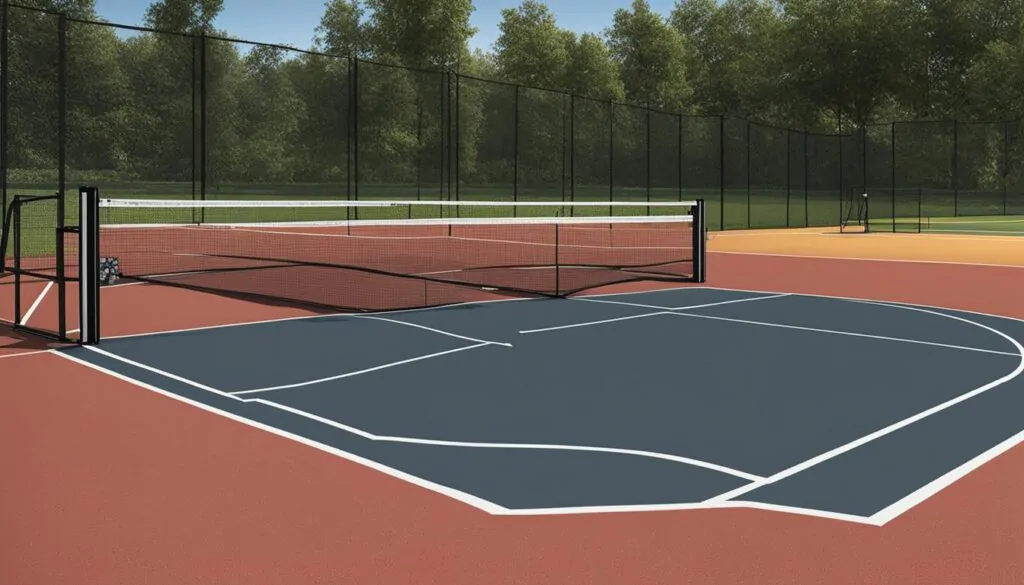
| Measurement | Value |
|---|---|
| Court Width | 20 feet |
| Court Length | 44 feet |
| Net Height (Center) | 34 inches |
| Net Height (Posts) | 36 inches |
These dimensions provide the framework for a well-designed small pickleball court. Within these measurements, other important aspects of the court include additional lines and areas such as the non-volley zone – also known as the kitchen – which has its unique measurements.
- Kitchen Length: 7 feet
- Kitchen Width: Same as court width (20 feet)
By familiarizing oneself with these small pickleball court measurements and carefully applying them during court setup, participants can ensure that their playing space meets the standard pickleball court dimensions set forth by regulating bodies, such as the United States of America Pickleball Association (USAPA).
Understanding Pickleball’s Play Zones
Several play zones make up a pickleball court, each with its own unique features and rules. Let’s dive into understanding the popular pickleball kitchen zone, non-volley zone, and service areas, to help you master the game.

Decoding ‘The Kitchen’ in Pickleball
The kitchen is a significant feature of the pickleball court, also known as the non-volley zone in pickleball. This zone prohibits players from volleying the ball if they are in, or their momentum carries them into, the designated kitchen area. The kitchen extends 7 feet from the net on each side, covering the entire width of the court. Let’s break down the key features of a pickleball court:
- Width: 20 feet
- Length: 44 feet
- Kitchen line: 7 feet from the net
- Service area: Box-shaped space delineated by the centerline, baseline, sidelines, and kitchen line
Identifying Service and Non-volley Zones
Small pickleball court play zones include two service areas adjacent to a centerline. These box-shaped spaces are marked by the centerline, baseline, sidelines, and the kitchen line. Players must execute their serves and play within these service areas, as long as they do not engage in volleying while inside the kitchen or non-volley zone.
| Play Zone | Description |
|---|---|
| Service Areas | Two box-shaped areas flanking the centerline and delineated by the centerline, baseline, sidelines, and kitchen line. |
| Non-Volley Zone (Kitchen) | A 7-foot zone extending from the net on both sides that prohibits volleying. Covers the entire width of the court. |
Now that we have explored the pickleball kitchen zone and service areas, you should have a better understanding of the various play zones within a pickleball court. Familiarizing yourself with these zones is essential to improving your skills and following the proper rules during gameplay.
Creating Your Personal Pickleball Court: DIY Steps
Setting up a personal pickleball court is an exciting DIY project that can be custom-tailored to your specific needs and preferences. Creating your own small pickleball court requires some essential tools and materials, as well as a few key guidelines to mark the playing surface accurately.
Tools and Materials You’ll Need
First, gather the following tools and materials for your homemade pickleball court:
- Measuring tape for accurate dimensions
- Chalk or painter’s tape for marking court lines
- Stencils and striping paint (optional, for a permanent setup)
- A net and support posts (portable or permanent)
With these materials at hand, you’re ready to start marking your small pickleball court lines and setting up the net.
Marking the Court Lines: Chalk or Tape?
You can choose between chalk and painter’s tape to mark the court lines on your pickleball DIY court setup. Each option has its advantages:
| Chalk | Painter’s Tape |
|---|---|
| Easily removable without damaging the playing surface | Adhesive but gentle on surfaces, also removable without damage |
| Affordable and widely available | More expensive, but provides stronger, more visible lines |
| May need frequent reapplication, especially in outdoor courts | Longer-lasting and less susceptible to elements |
| Softer, more subtle markings on the court | Sharper, more defined lines for clear boundaries |
Regardless of whether you choose chalk or tape for marking small pickleball court lines, ensure proper adherence to standard dimensions and measurements to create an accurate playing surface. If a permanent solution is desired, consider using stencils and striping paint to create durable, long-lasting lines.
Whether you’re creating a pickleball court in your backyard or repurposing a shared tennis court, following these DIY steps with the right tools and materials will help you achieve a functional and enjoyable small pickleball court setup for endless hours of play.
Customizing for Smaller Spaces and Alternative Court Dimensions
While adhering to the standard small pickleball court dimensions is a priority for most players, not everyone has access to a full-size court. This should not prevent enthusiasts from enjoying the game. Customizing the court to fit smaller spaces or alternative dimensions can still provide an enjoyable experience while maintaining safety and ensuring out-of-bound areas are properly marked.
The following recommendations can help you make the most out of a small space pickleball court or one with custom dimensions:
- Be mindful of safety and maintain adequate room for player movement around the court
- Modify the net height and positioning according to the space available
- Use temporary markings such as tape or chalk to easily adjust and reposition lines as needed
- Consider reducing the non-volley zone (also known as the kitchen) and service areas proportionally
It is important to remember that some adjustments might affect the gameplay and strategy of pickleball, so be prepared to adapt to the custom dimensions.
Additionally, it’s essential to account for the non-ideal conditions of smaller spaces. Evaluating the available area and making modifications accordingly will help ensure safe play and enjoyment of the game.
| Standard Small Pickleball Court | Custom Dimension Pickleball Court |
|---|---|
| 20 ft wide | Width adjusted to fit available space |
| 44 ft long | Length adjusted to fit available space |
| 34 inches net height (center) | Net height adjusted as needed |
| 7 ft non-volley zone width | Non-volley zone width adjusted proportionally |
Ultimately, it is preferable to use the standard size and layout for a small pickleball court, but there are situations where this may not be feasible. In such cases, customizing the court to fit a smaller space or using alternative dimensions can still provide a safe and enjoyable playing experience. By being creative and adaptable, it is possible to create a unique court that allows people to play pickleball in their own space and enjoy the game.
Conclusion
Setting up a small pickleball court provides a flexible and adaptable solution for players to enjoy this popular sport in various locations. By using existing tennis courts or personal spaces, pickleball enthusiasts can easily engage in the game without needing a significant amount of space or resources. With the right measurements, guidelines, and understanding of play zones, players can bring this rapidly growing sport to their local communities or backyards, making pickleball court dimensions accessible and enjoyable for all.
When it comes to setting up a small pickleball court, knowledge of the court dimensions and markings is crucial. By adhering to the standard pickleball court dimensions and adjusting for small spaces as necessary, players can create a functional and safe play area that meets their individual needs. Temporary solutions using chalk or tape offer a way to quickly set up a court for pickleball practice or recreational play, while more permanent markings can be used for dedicated facilities or personal courts.
Ultimately, transforming a tennis court or personal space into a small pickleball court encourages widespread enjoyment of the sport. As pickleball continues to grow in popularity, adapting standard dimensions to fit local courts or personal use ensures that players of all skill levels can take part in this fun and engaging game. So go ahead and create your own small pickleball court, and enjoy endless hours of playtime with friends and family!
FAQ
What are the dimensions of a small pickleball court?
The dimensions of a small pickleball court are consistent with a standard doubles badminton court, which measures 20 feet wide by 44 feet long. This size is the same for both singles and doubles play.
How do small pickleball courts compare to tennis courts?
Small pickleball courts have a quarter of the footprint of a standard tennis court pad. A standard tennis court can typically accommodate four small pickleball courts.
How can I convert a tennis court into a small pickleball court?
You can transform a tennis court into a small pickleball court by lowering the tennis net to 34 inches in the center and marking off the appropriate lines with tape or paint. Courts can be temporarily lined to ensure minimal disruption if the surface is shared for tennis as well.
What are the key measurements for a small pickleball court?
Key measurements for a small pickleball court include a width of 20 feet, a length of 44 feet, a net height of 34 inches in the center, and 36 inches at the posts.
What is the ‘kitchen’ in pickleball?
The ‘kitchen’ is a unique feature of the pickleball court, consisting of a non-volley zone that extends 7 feet from the net on each side and runs the width of the court. Players are restricted from volleying the ball if they are in or if their momentum carries them into the kitchen.
How do I create my own small pickleball court?
To create your own small pickleball court, you’ll need tools such as measuring tape for precision and materials like chalk or tape to mark the playing surface. For a permanent setup, you can use stencils and striping paint for durable lines.
Can I customize a small pickleball court for smaller spaces or alternative dimensions?
While standard small pickleball court dimensions are set, there is room for customization in smaller spaces or where alternative dimensions are required. Provisions for space beyond the court ensure safe play and account for out-of-bounds areas, even if not to the ideal specifications.
